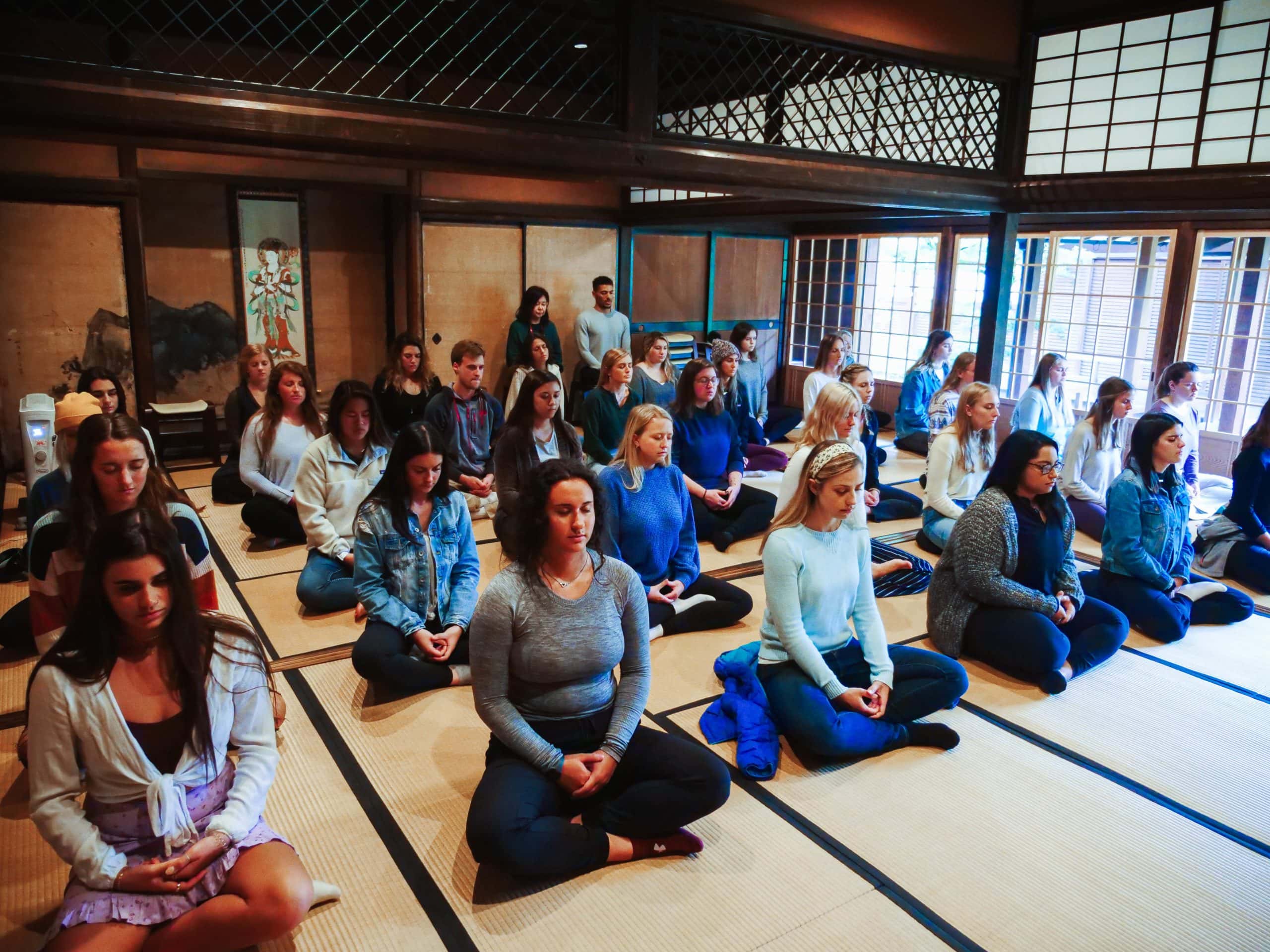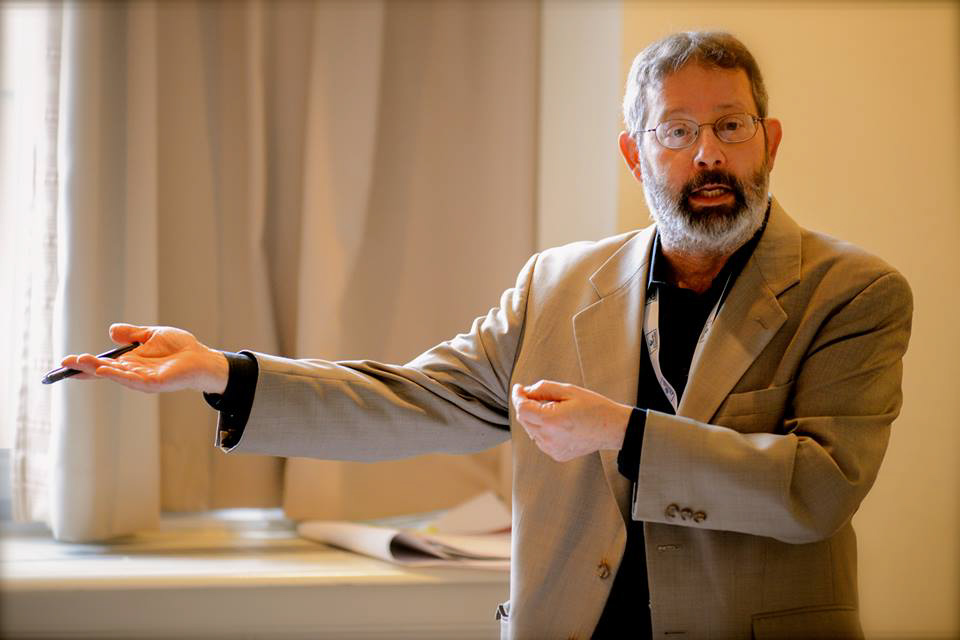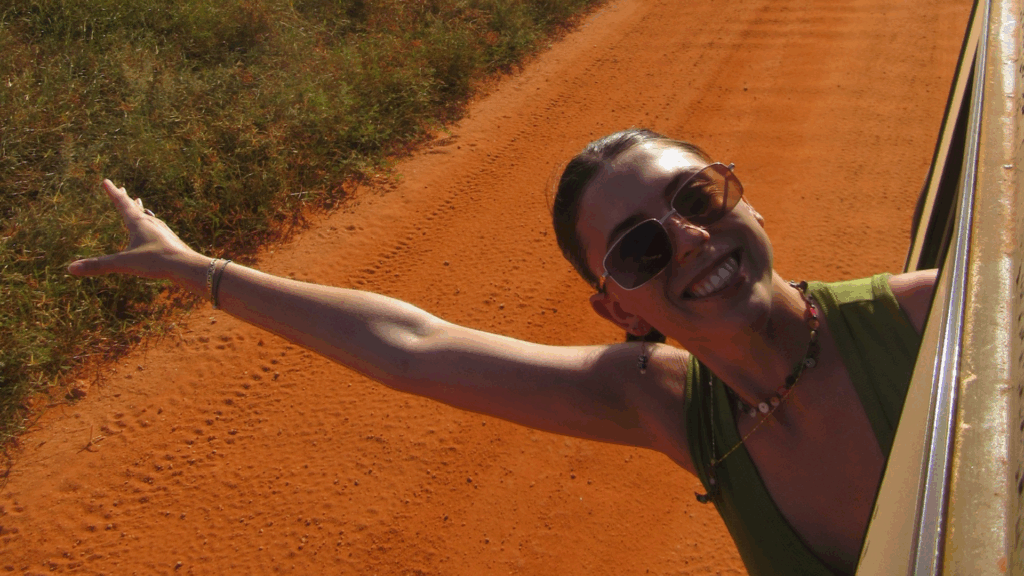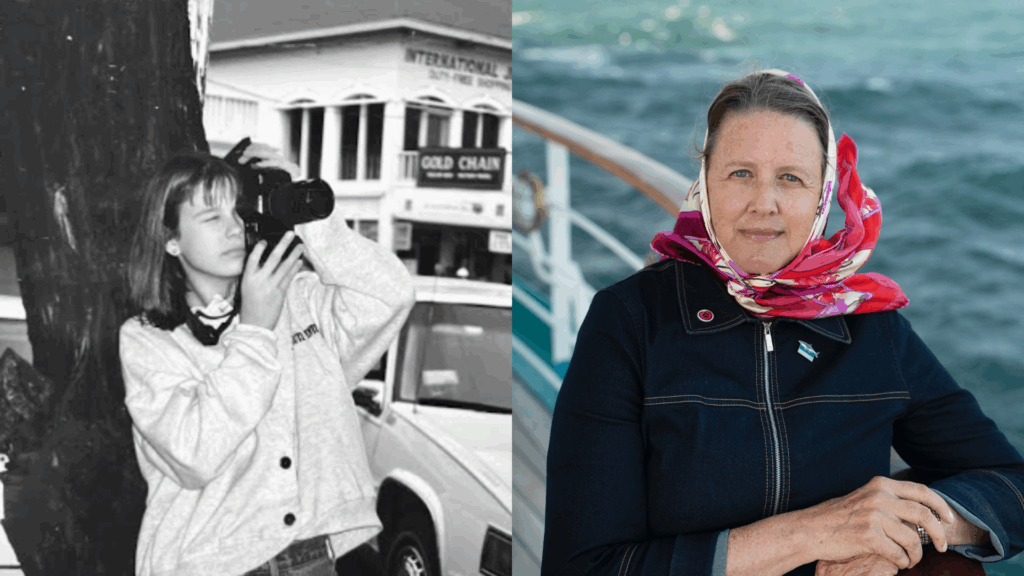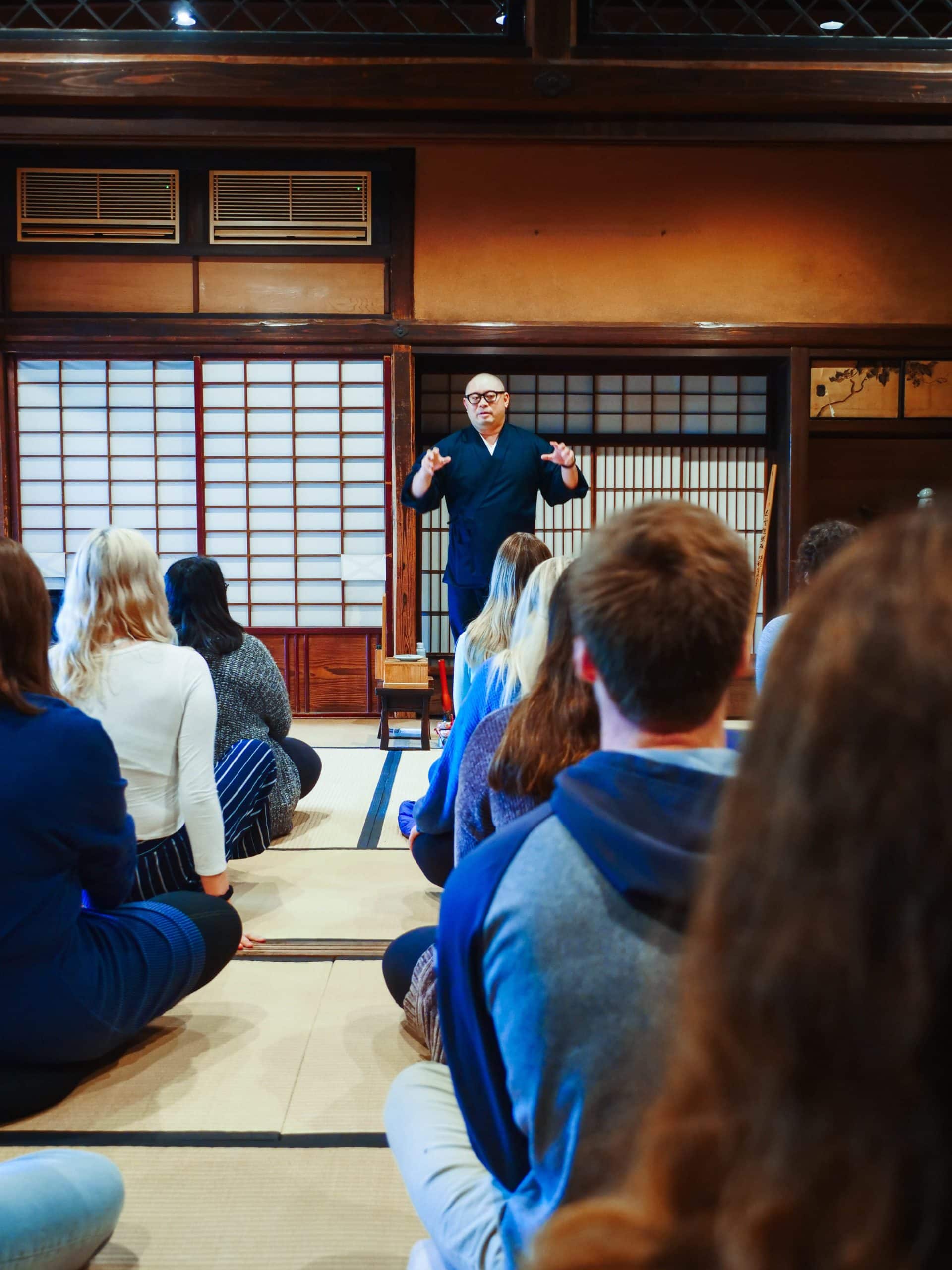
While many voyagers hit the ground running and raced to explore Kobe and Tokyo upon reaching Japan, Professor Meg Jay’s Positive Psychology class got to experience a relaxing and introspective first day while gaining a more apropos understanding of Japanese culture.
The field program began at the Shunkoin Temple & Zen Center in Kyoto, where students toured the temple and grounds before heading into the meditation room. Reverend Takafumi Kawakami greeted the group and facilitated an interactive discussion on contentment, happiness, and truth. He posed the question, “How do you think beliefs and cultures form an individual’s truth?”, which ignited a group conversation about how our upbringings, cultural circumstances, and geographical locations dictate many foundational aspects of what we believe and how we define ourselves. Voyager Tatiana Naclerio noted that she learned not only the difference between truth and belief but about “how we’re able to draw our beliefs from truth and how our beliefs are able to fuel our sensations and our feelings about the world.”
Other questions (such as “Are you ever able to observe yourself?” and “How is happiness defined by where you live and why are certain countries labeled as ‘more happy?”) were discussed by the group. Reverend Takafumi weighed in on the notion of life satisfaction from a Zen Buddhist perspective before transitioning into basic instructions on Zen meditation. He explained to the group that meditation is less about trying to clear your mind of thoughts, and more of just becoming aware of them. The group put his words to practice and engaged in a brief guided meditation session, which culminated with matcha tea and Japanese sweets.
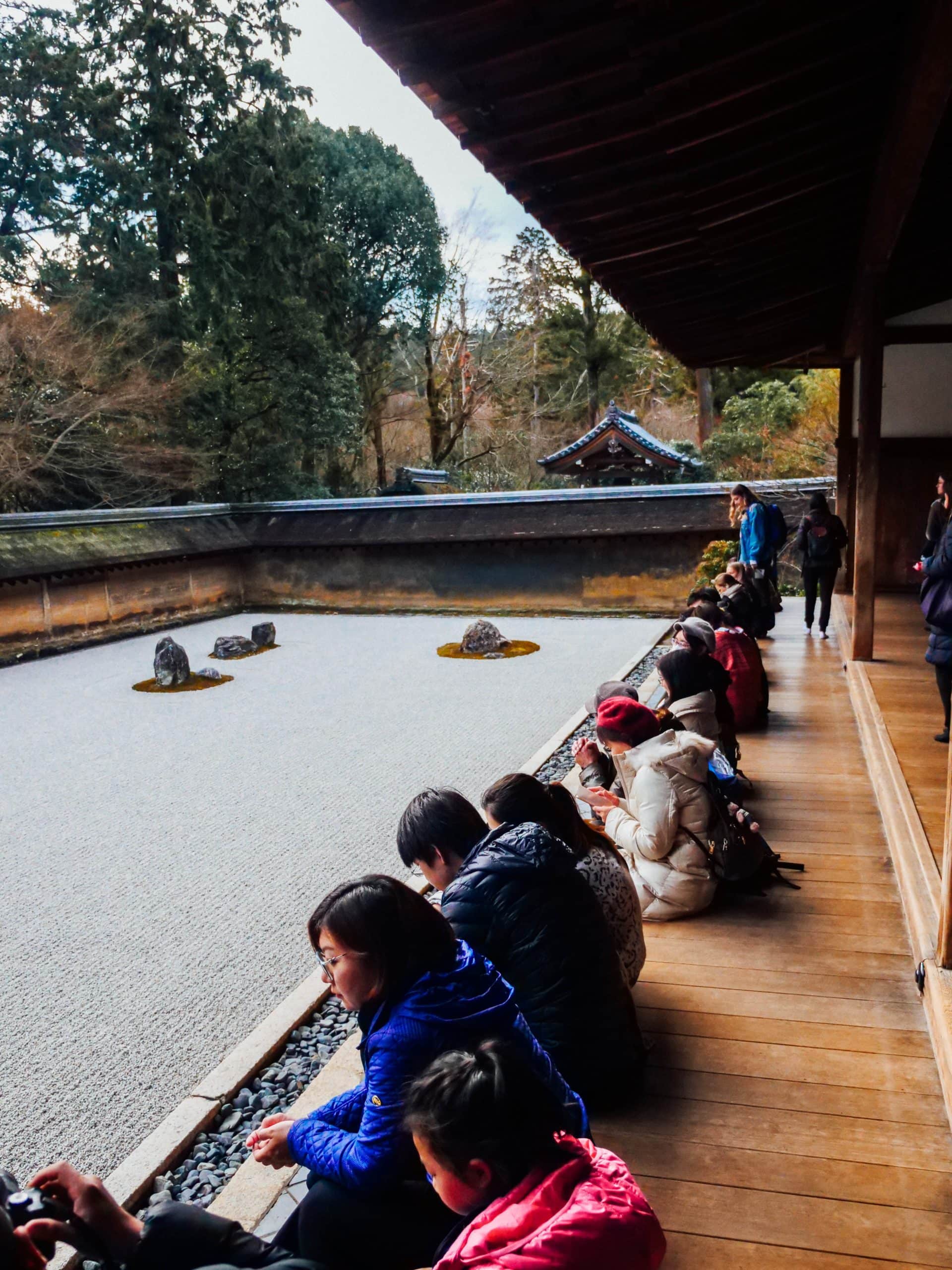
After a delicious lunch, the group traveled to the Ryoanji Temple, the site of Japan’s most famous rock garden. Though the site was originally an aristocratic villa, it was converted into a Zen temple in 1450. The garden showcases a variety of water features and beautiful plants, but the main attraction is the famous rock garden, featuring 15 rocks that are laid out across patches of moss and pebbles. It was impossible for students to see all 15 rocks at once; from any vantage point, at least one of the rocks is always hidden from sight.
“I felt very calm when I was there. It’s like nothing I’ve seen before. There are 15 rocks but you can only ever see 14, which teaches you about imperfection,” said voyager Maggie Larsen from Colorado State University. “The garden is really simple but so different, and depending on where you sit, your perspective is always changing.” After some free time to explore the grounds, the group departed Kyoto to head back to the MV World Odyssey in Kobe.
Heading back to the ship, voyager Mia Amoroso from the College of Charleston summarized the day: “I feel like Japanese culture takes an entirely different view on society and on happiness because they have more of a holistic view, whereas Americans are more individualized. I thought it was interesting to step out of my comfort zone and to think about things in a different context.”
